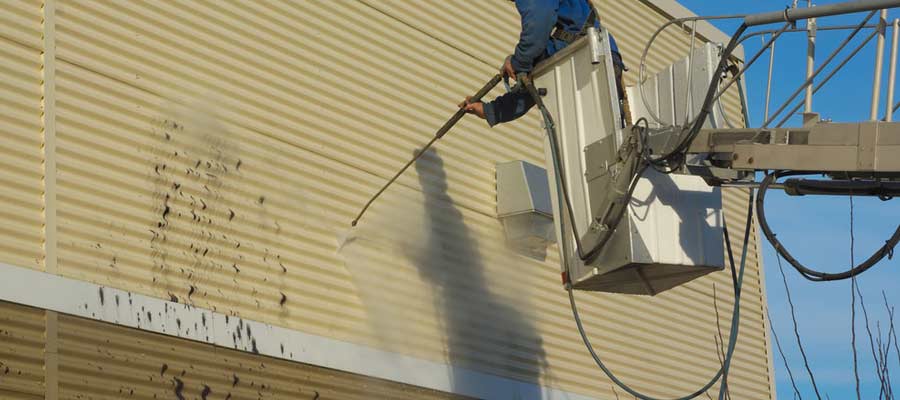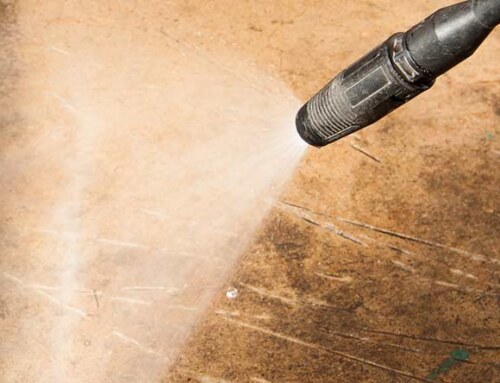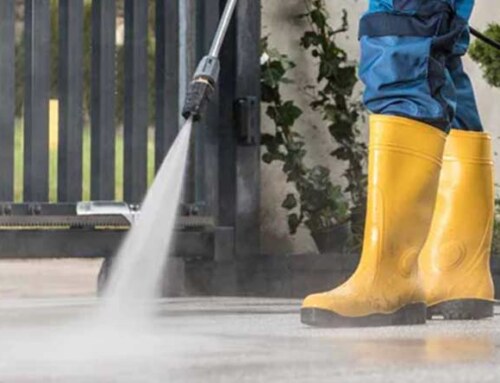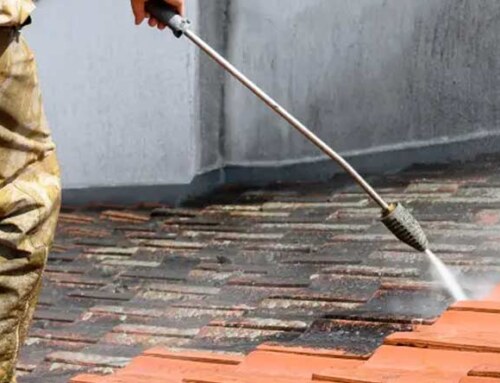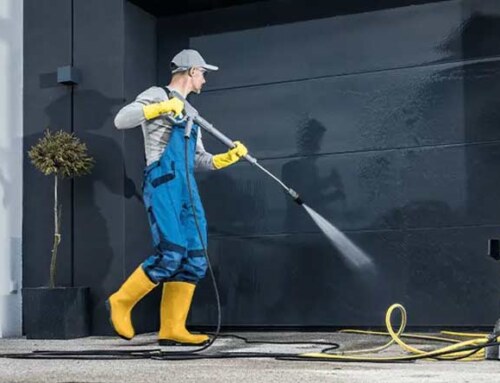Whether you’re hosting an outdoor party or simply want to tidy up, a clean patio can make a world of difference. Power washing is the ultimate solution for breathing new life into your outdoor surfaces, provided that you have taken the necessary precautions.
Why Power Wash Your Patio?
Before we get into the how-to, it’s worth understanding why you should power wash your patio. Over time, contaminants such as dirt, algae, moss, and grime build up on outdoor surfaces, making them look dull and potentially hazardous. Power washing effectively removes these unwanted materials, reviving your patio’s appearance and ensuring a safer, cleaner outdoor space.
Tools and Materials Needed
To kick things off, here’s a quick list of tools and materials you’ll need:
| Tool/Material | Description |
| Power washer | Essential for high-pressure cleaning |
| Surface cleaner attachment | Optional but useful for even cleaning |
| Garden hose | To supply water to the power washer |
| Safety gloves and goggles | Personal protective gear |
| Cleaning detergent (optional) | Specifically formulated for concrete |
| Broom | For sweeping debris away before power washing |
| Stiff brush | For scrubbing stubborn stains |
How to Power Wash Concrete Patios
Let’s begin with the most common type of patio—concrete. Here’s a step-by-step guide on how to power wash your concrete patio:
Step 1: Preparation
- Clear the Area: Start by moving all furniture, plants, and other items off the patio. Sweep the surface thoroughly to remove loose debris such as leaves and dirt.
- Inspect for Damage: Check your patio for cracks or damage. Power washing can worsen existing issues, so it’s best to repair any noticeable cracks before proceeding.
Step 2: Set Up the Power Washer
- Connect the Hose: Attach your garden hose to the power washer’s water inlet.
- Select the Nozzle: Use a 25-degree nozzle for general cleaning. This provides a strong jet of water without being too harsh.
- Add Detergent (Optional): If you’re using a cleaning detergent, follow the power washer manufacturer’s instructions for adding it.
Step 3: Test a Small Area
- Safety First: Put on your safety gloves and goggles.
- Test Spot: Start in a less visible corner of the patio. This helps you gauge the pressure and make sure you’re not causing damage.
Step 4: Power Wash the Surface
- Maintain Distance: Hold the power washer nozzle about 12 inches from the surface. Adjust as needed to prevent damage while achieving a clean surface.
- Use Sweeping Motions: Move the nozzle in a sweeping motion, working section by section. This ensures even cleaning without streaks.
- Stubborn Stains: For tough spots, use a stiff brush or a surface cleaner attachment to help break down the grime.
Step 5: Rinse and Dry
- Final Rinse: Once you’re satisfied with the cleanliness, switch to a wider nozzle (usually 40 degrees) to rinse off any remaining detergent or debris.
- Drying: Allow the patio to dry completely before placing furniture or walking over it.
Power Washing Other Patio Surfaces
Concrete isn’t the only patio surface that benefits from a good power washing. Let’s discuss how to power wash other popular materials: brick, stone, and wood.
Brick patios look quaint and charming but can easily become overrun with moss and algae.
- Preparation: Clear the area of any furniture and sweep away debris.
- Inspect and Repair: Check for loose or damaged bricks. Re-set any wobbly bricks and fill in gaps with new mortar.
- Pressure Setting: Use a lower pressure setting, around 1000-1500 PSI, to avoid damaging the brick.
- Nozzle Choice: Use a fan nozzle (25-degree) for gentle yet effective cleaning.
- Detergent: Applying a mild detergent specifically for bricks can be useful in breaking down grime.
- Cleaning: Maintain a safe distance (about 12-18 inches) to avoid chipping the brick or the mortar.
- Final Steps: Rinse thoroughly with a low-pressure nozzle and allow it to dry.
Stone patios are durable and resistant but can accumulate dirt and mildew over time.
- Sweep and Inspect: Clear the area and inspect for any damage.
- Pressure Setting: Stone can handle higher pressure, around 2000 PSI. Adjust based on the type of stone.
- Nozzle Choice: Start with a 25-degree nozzle.
- Detergent: Use a stone-safe cleaning solution if needed.
- Power Washing: Use sweeping motions and maintain a moderate distance.
- Rinse: Once the patio is clean, rinse thoroughly to ensure no detergent residue is left behind.
- Drying: Let the stone patio dry completely before use.
Wooden patios provide a natural, rustic look but are prone to mildew and graying.
- Clear and Inspect: Move any items off the patio and inspect for rot or loose boards.
- Prepping the Wood: Wet the wood slightly to prevent the cleaner from soaking in too fast.
- Pressure Setting: Use low pressure, around 500-600 PSI, to prevent damaging the wood.
- Nozzle Choice: A 40-degree nozzle is ideal for wood surfaces.
- Detergent: Use a wood-specific cleaning detergent.
- Power Washing: Use a sweeping motion with the nozzle around 12 inches away from the surface.
- Rinse: Rinse thoroughly with a garden hose or a low-pressure setting on your power washer.
- Drying: Allow the wood to dry completely. You may need to reseal the wood afterward.
Tips and Tricks for Power Washing Success
Here are some extra tips to ensure you get the best results from your power washing endeavors:
- Test First: Always test a small, inconspicuous area to ensure the pressure won’t damage the surface.
- Stay Consistent: Maintain a consistent distance and motion to avoid streaks or uneven cleaning.
- Work in Sections: Divide the patio into smaller sections and clean one at a time.
- Mind the Weather: Choose a dry, windless day for power washing to ensure even drying and to prevent debris from being blown onto your clean surface.
Klein Pressure Washing is here to ensure that your power washing project goes smoothly. We work with the best industry leaders to deliver stellar results!
Maintenance After Power Washing
After thoroughly power washing your patio, regular upkeep is key to maintaining its fresh appearance.
- Sweeping: Sweep the patio regularly to remove leaves and debris.
- Sealing: Depending on the material, consider applying a sealant to protect the surface from future stains and damage.
- Routine Cleaning: Lightly wash the patio every few months to prevent the buildup of grime and mildew.
Can You Use Bleach with Your Power Washer?
It’s generally not recommended to use bleach as it can damage your power washer and harm surrounding vegetation. Instead, use detergents specifically designed for use with power washers.
So there you have it—the ultimate guide to power washing concrete and other patio surfaces! By now, you should feel confident tackling your patio with a power washer, knowing you have the right techniques and knowledge at your fingertips. A clean, well-maintained patio is just a power wash away from becoming your favorite outdoor oasis. Contact us right away to start giving your patio a new shine!

